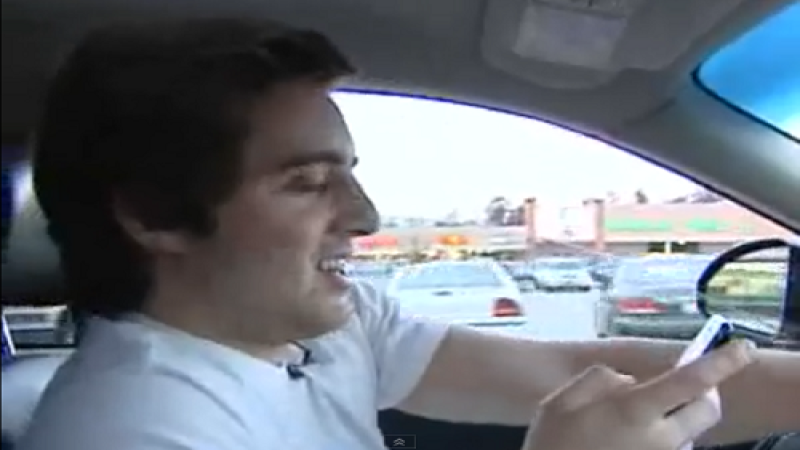In an announcement meant to grab headlines, the National Safety Council (NSC) says that government and other reporting of the causes of traffic deaths are dramatically wrong. It states that fully one quarter of all fatal accidents are caused by cell phones compared to the 1.2% that years of government research have attributed to phones. This is a hot button issue and if this study has any foundation in fact it could be important to all of us that report on such issues. Our look at the story behind the headline finds some troubling issues that make it hard for us to agree that the study and its conclusion are valid.
First of all, let’s look at the media reporting that has already occurred from NSC's announcement. Take USA Today for example. May 7th it used the headline “Crashes caused by drivers on cellphones underreported.” It is not yet a fact that cell phone caused deaths are under-reported. Here’s why.
Whenever one reads an announcement by a group with an agenda one should be suspicious. The group may not have done a true scientific analysis. Perhaps it started with a conclusion and found a way to prove it. NSC says of itself, “Through its efforts to reduce distracted driving, the National Safety Council works with people who lost loved ones in crashes that involved driver cell phone use.” In this case the NSC identified 180 individual examples of fatal crashes over a three year period in which cell phones were thought to have been a contributing factor, but in which they though cell phones were not reported as a cause. Just as a point of reference there were approximately 97,000 fatal crashes in that period, yet NSC focused on 180 examples it already knew involved cell phones in some way. Before we go any further, any conclusion they draw can only be representative of those 180 cases. Any inference they draw of the remaining 97,000 fatal crashes is invalid since they did not use a random sample, or choose 180 other cases to act as some form of blind comparison.
The group admits it started with examples it already knew to be suspect. Meaning it already knew that they might find the report about these 180 fatalities to be incorrect. Quoting the study itself (not mentioned in its press release) the NSC says of its sample “This project is based on a convenience sample of identified crashes. It is not possible to identify crashes involving cell phones either as a random sample or as a census.” This is simply not true. The group could have picked any 180 (why so few by the way?) crashes and dug deeply to see if there was an underreported cell phone cause. The sources the NSC used to base its findings on were:
- Media articles via Google Alerts
- Meltwaternews tracking service
- People who contacted NSC or FocusDriven after media events
- FocusDriven board member contacts
- Referrals from traffic safety colleagues
Shockingly, the group excluded any example involving a police report! The white paper states: “Police crash reports are not included as a source because the project’s goal was to find cell phone involved crashes that were not recorded as such on crash reports. Thus, sources beyond police crash reports were needed.” Wouldn’t a translation of that be “We ignored what the police reports said and instead we relied on what our friends (Traffic safety colleagues and board member contacts) thought happened. Furthermore, we knew what we wanted the conclusions of our study to be, so why bother with what the police said on their reports?”
Interestingly, of the 180 cases NSC looked into, about half were properly reported and did mention cell phones were involved. In fact, over the period the group looked at, the percent of accurate reporting increased from a low of 8% in 2008 to 35% in 2009 and finally up to 52% in 2010. If that increase in accuracy trend is continued through to 2012, there is no story here because the reporting accuracy has reached 100%. Shouldn’t the group conclude that “Accuracy of reporting is approaching perfect based on our findings?”
The government looks at every fatality involving a motor vehicle. For example a bus driver who runs over a drunk pedestrian, walking on a roadway, talking on a cell phone, at night, in the snow. If the pedestrian is killed to what would you attribute the death? Pick one main factor and then list the contributing ones. Police do this based on their investigation and they make a report that becomes part of the Fatality Analysis Reporting System administered by NHTSA. Deaths involving motor vehicles are categorized. For example, about 33%, or 11,000 of the deaths were recorded as caused by alcohol impairment of someone involved, usually the driver of the vehicle. They also break the type of accident down. For example, about 12% of deaths are motorcycle rider deaths. According to NHTSA and the FARS data, about 10%, or 3,300 of all fatal accidents are “Distracted Driving” related. Of that, a small percentage are known to involve cell phones and are recorded as such. The total is 1.2%. The last year which has been finalized is 2011 and the distracted driving segment has continued to decline. Motorcycle deaths by contrast increased. The 2012 numbers are not yet finalized. This is important because the group also used preliminary estimates from that not yet final data in its report without mentioning it did so.
The conclusion of the NSC review of 180 select incidents out of about 97,000 motor vehicle deaths is that 25% of all fatal motor vehicle accidents were caused in part or in full by cell phones. Not the 1.2% the government and the police said were caused by phones. Without going too much further, realize that pretty much every year since cell phones were introduced the rate of fatal accidents has gone down. We did our own story pointing out the correlation (not causation) here. There are some odd years with a slight uptick, but overall, the rate of deadly accidents has dropped dramatically since cell phones appeared. Accidents in general follow that trend, but are much harder to analyze since non-fatal accidents don’t get tracked very closely.
If the NSC study is right it would mean that a quarter of all accidents in which the driver was drunk were not caused by a drunk driver, but rather a phone. It would mean that those deaths – we are talking about only fatalities remember – police found were caused by speed were not caused by speed, but rather ¼ of the time the officer was wrong and the cause was a phone call or text. It would mean that ¼ of the fatal motorcycle deaths were caused by a phone. We could continue down the list. Intoxicated pedestrians walking at night, ¼ of them were not simply run over accidentally by a driver who did not see them, they were killed by a driver on the phone.
NSC does reveal one thing. Accident reporting can be difficult to filter and it can be hard to do a true scientific analysis of the causes of accidents.
The NSC white paper is here
Photo courtesy of Youtube.com and WXIItv












